New Media
If you are considering a career in music, production, design, film, photography or all things creative, New Media may be the program for you! This high-energy, one-year program offers students a chance to explore the many opportunities in this exciting field.
With the ability to examine the various types of media such as digital design services, sound design, digital film and digital photography, you'll be well on your way to the career you've always dreamed of with your foot in the door to college or additional training.
Students in the program will use state-of-the-art technology, work with real clients and create projects both individually and in teams. You will learn to problem-solve, work independently and learn to mirror industry standards technically and creatively. Field trips, competitions and scholarship opportunities round out the content of this program.
Eligible juniors who successfully complete this course have the opportunity to return for a second year to focus on a specific media of their choice. This second year opportunity is being held three days per week in person, Monday's, Wednesday's & Thursday's from 3:15-5:15 . Students are expected to work their two hours supplementing the hours taken off their homeschool schedule.
New Media Class Syllabus
Our mission is to provide students with the essential knowledge, skills, and work habits to excel in their careers and future learning.
Course
New Media
National Career Cluster: Arts and Communications
Michigan Career Pathway: Arts and Communications
Instructor(s)
Niki Adams
517.244.1318
Credentials
BA Graphic Design – Spring Arbor College
MA Education CTE – Ferris State University, Adjunct Instructor
Michigan Film & Digital Media Advisory Council Member (serving currently)
Types of Credit
- Fourth year math credit
- Elective Credit: Recommended by WTC and awarded by sending school
Articulation Agreement
- Lansing Community College
Direct Credit
-
Ferris State University
Special Requirements
1st Year students - Professional dress, Job Fair, Mock Interviews, Portfolio & Student Showcase
2nd Year students - Work-based learning (must qualify), Client work (must qualify), Portfolio, Mock Interviews & Student Showcase.
Program Description
STRICT NO CELL PHONE POLICY FOR BOTH 1ST AND 2ND YEAR STUDENTS
It’s imperative that creatives do not get interrupted during the creative process. Studies have found, when an individual is interrupted, it takes 20 minutes to get back into the zone. New Media students do not have the luxury of losing 20 minutes during class time.
1st offense - warning + work habits will be impacted 55%
2nd offense - parent contact + work habits will be 0%
3rd offense - administration involvement
1st YEAR STUDENTS
This year is for students to explore the careers in the digital arts. These careers include
digital design & illustration, digital photography, sound design and digital film. Students will be working independently, as well as in teams on projects. This program is project-based learning.
Students will be introduced to setting up their career profiles. They will learn to create a
resume, develop a portfolio, understand the importance of networking and participate in a
mock interview.
In order to be eligible for the 2nd Year Program, a student must successfully complete year one. The 2nd Year Program is for students who are going on to careers in the digital arts.
2ND YEAR STUDENTS
The 2nd year program is designed for returning students to focus on continuing to develop their
portfolio, attend a work-based learning (for those who qualify), work with clients (for those who
qualify) and continuing to develop upon creative skills and technical skills.
The goal is to get the students ready for their next step towards their career goal as a digital artist.
Universal Learning
The New Media program is committed to universal learning and supporting all students needs. Our classroom space, routines, resources, and interactions will be as inclusive as possible. Treating each other with respect, listening to each other, having an open mind and a willingness to help each other learn is crucial to universal learning.
Course Topics (year 1)
- Identify Classroom Rules and Procedures
- Introduction to Graphic Design theories, technology & careers in this field
- Introduction to Digital Photography theories, technology & careers in this field
- Introduction to Audio Production theories, technology & careers in this field
- Introduction to Digital Film Production theories, technology & careers in this field
- Work Ethics
- Post-Secondary Education
- Working with clients
- Job Shadowing
- Demonstrate Safety
- Career Exploration
- Promote Teamwork and Communication
- Mock Interviews + Portfolios
- Student Showcase
Course Topics: (year 2)
- Continuing Portfolio development
- College & Career Research
- Advanced Graphic Design
- Advanced Digital Photography
- Advanced Audio Production
- Advanced Digital Film
- Leadership/Mentoring Skills
- Work-based Learning
- Mock Interview + Portfolio
- Client Work
Exit Outcomes
Individualized career exploration, through classroom and Work-Based Learning opportunities, relative to the student’s broad and specific occupational interest.
Identification of and support for achieving an individualized Career Path Plan, to include post high school College or vocational training.
Work Based Learning Opportunities
Core of knowledge, skills and work habits to achieve entry level employment and internships in a variety of arts and communications careers.
Identification of and support for achieving an individualized Career Path Plan, to include post high school College or vocational training.
College articulation at Lansing Community College (optional).
Grading Policy
New Media will be using Evidence-Based Reporting (EBR) this school year. EBR is used to ensure that a student’s grade reflects their learning based on our course’s learning expectations. EBR is also known as standards-based grading which emphasizes mastery of skills rather than completion of tasks.
You may notice some differences in PowerSchool. There may be times when it seems like fewer grades are entered into the system or you may see projected grades. This is because EBR focuses on mastery of skills and collecting a variety of evidence rather than completion of tasks. It is intended to provide clear expectations regarding what they need to know/provide evidence for and gives them the ability to improve their outcome if they choose to do so. EBR allows students to have multiple opportunities to show what they have learned and earn an appropriate grade. Although the process of earning grades is different, all students will continue to earn letter grades that are reported back to their home district.
New Media Goal Calendar - there are four essential competency areas students will be graded on: Employability Skills, Project Management; Process and Quality throughout the school year.
Employability Skills:
| Marking Period 1 | Marking Period 2 | Marking Period 3 | Marking Period 4 | Marking Period 5 | Marking Period 6 |
| Developing (DV) | Developing (DV) | Approaching Proficiency (AP) | Approaching Proficiency (AP) | Proficiency (PR) | Proficiency (PR) |
| I can demonstrate Employability Skills with instructional support & prompting. | I can demonstrate Employability Skills independently with instructional support and prompting. | I can demonstrate Employability Skills independently with minimal prompting. | I can demonstrate Employability Skills independently with minimal prompting. | I can demonstrate Employability Skills consistently & independently. | I can demonstrate Employability Skills consistently & independently. |
Project Management:
| Marking Period 1 | Marking Period 2 | Marking Period 3 | Marking Period 4 | Marking Period 5 | Marking Period 6 |
| Developing (DV) | Developing (DV) | Approaching Proficiency (AP) | Approaching Proficiency (AP) | Proficiency (PR) | Proficiency (PR) |
| I can demonstrate Project Management with instructional support & prompting. |
I can demonstrate Project Management independently with instructional support and prompting. |
I can demonstrate Project Management independently with minimal prompting. | I can demonstrate Project Management independently with minimal prompting. | I can demonstrate Project Management consistently & independently. | I can demonstrate Project Management consistently & independently. |
Process:
| Marking Period 1 | Marking Period 2 | Marking Period 3 | Marking Period 4 | Marking Period 5 | Marking Period 6 |
| Developing (DV) | Developing (DV) | Approaching Proficiency (AP) | Approaching Proficiency (AP) | Proficiency (PR) | Proficiency (PR) |
| I can demonstrate the Process with instructional support & prompting. | I can demonstrate the Process independently with instructional support and prompting. | I can demonstrate the Process independently with minimal prompting. | I can demonstrate the Process independently with minimal prompting. | I can demonstrate the Process consistently & independently. | I can demonstrate the Process consistently & independently. |
Quality:
| Marking Period 1 | Marking Period 2 | Marking Period 3 | Marking Period 4 | Marking Period 5 | Marking Period 6 |
| Developing (DV) | Developing (DV) | Approaching Proficiency (AP) | Approaching Proficiency (AP) | Proficiency (PR) | Proficiency (PR) |
| I can demonstrate Quality with instructional support & prompting. | I can demonstrate Quality independently with instructional support and prompting. | I can demonstrate Quality independently with minimal prompting. | I can demonstrate Quality independently with minimal prompting. | I can demonstrate Quality consistently & independently. | I can demonstrate Quality consistently & independently. |
A: meeting and/or exceeding the goal for all ECA's
B: not meeting goal calendar in 1 ECA
C: not meeting the goal calendar in 2 ECA's
D: not meeting goal calendar in 3 ECA's
F: NE in any ECA
Grades will also be influenced by the trend of scores. For example, if a student trends downward, his/her grade will likely be impacted negatively. If a student trends upward, his/her grade will likely be impacted positively.
Content Media Information
Ingham Intermediate School District (IISD) and Wilson Talent Center (WTC) seeks consent to share and/ or sell work which students’ have produced as part of the New Media Program. Our goal is to share these works with a broader audience and/or sell these works to provide our students with additional career based experiences. Any proceeds for sales will be retained by the New Media Program and used to help sustain the programs and services offered by the New Media Program. This is not a requirement, so your child’s grade will not be affected either way.
Information
The New Media students will produce various materials and artworks as part of the curriculum of the program. These materials may include physical and/or digital objects and artwork. These materials and images remain the intellectual property of the New Media Program and WTC and with consent may be distributed throughout the facilities of Ingham ISD and WTC, the local districts we serve, the community, and/or websites including retail websites for the purpose of selling said work. Student work may be displayed via print and electronic means, including brochures, websites (school and/or retail), video presentation, and media outlets (e.g., newspapers, T.V. news).
Photos from the New Media program . . .
-
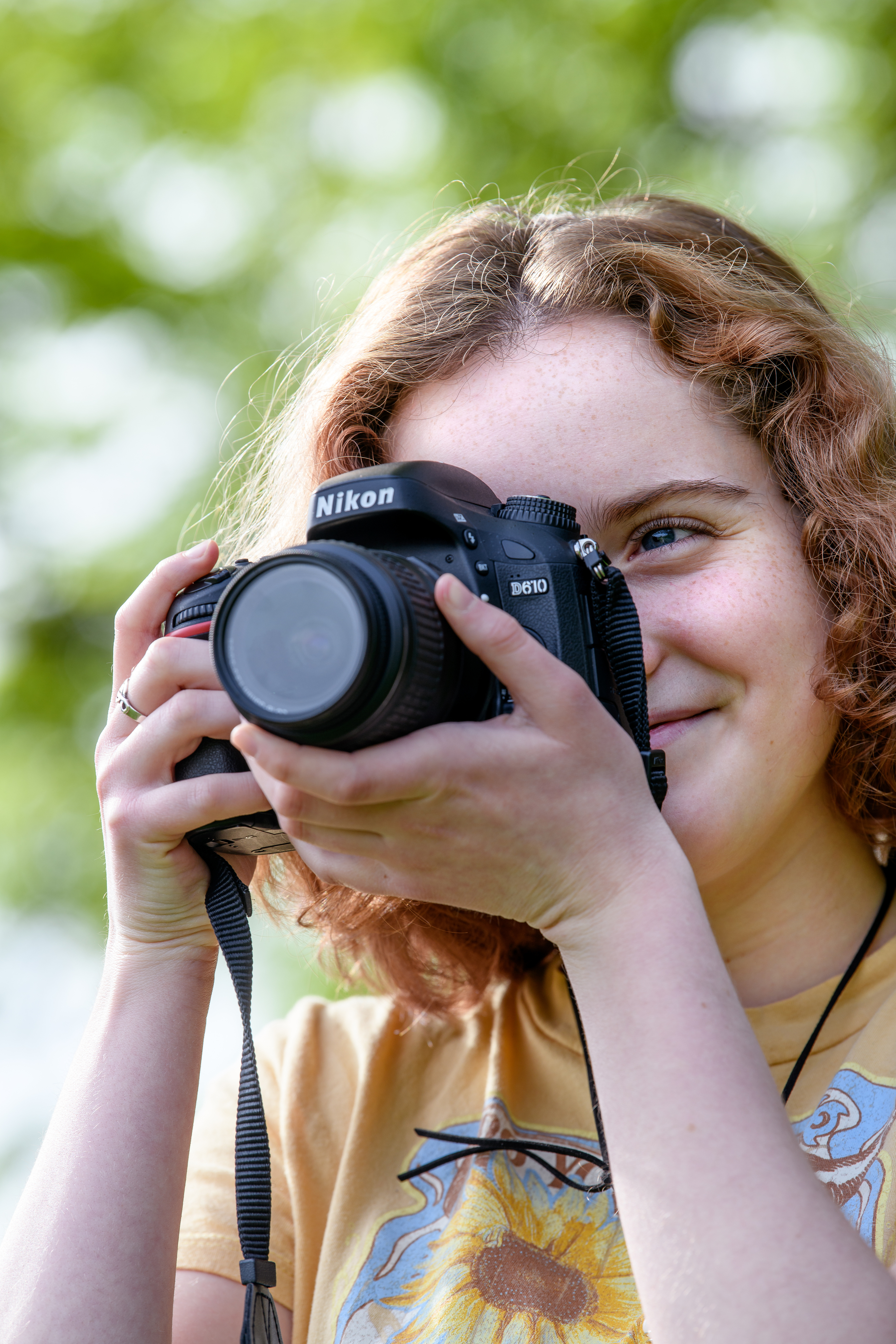 Click to see a larger version
Skip to end of gallery
Skip to start of gallery
Click to see a larger version
Skip to end of gallery
Skip to start of gallery
-
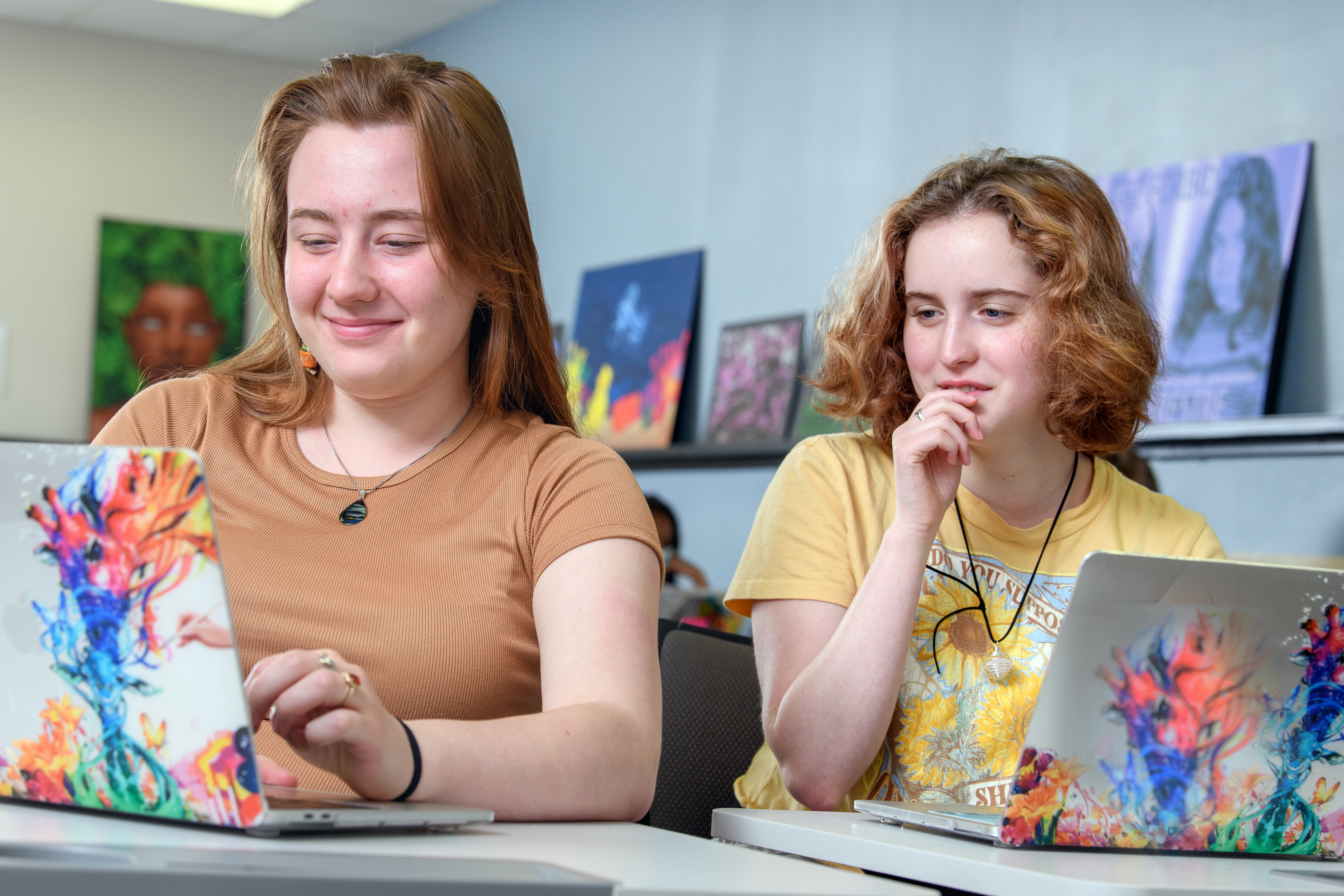 Click to see a larger version
Skip to end of gallery
Skip to start of gallery
Click to see a larger version
Skip to end of gallery
Skip to start of gallery
-
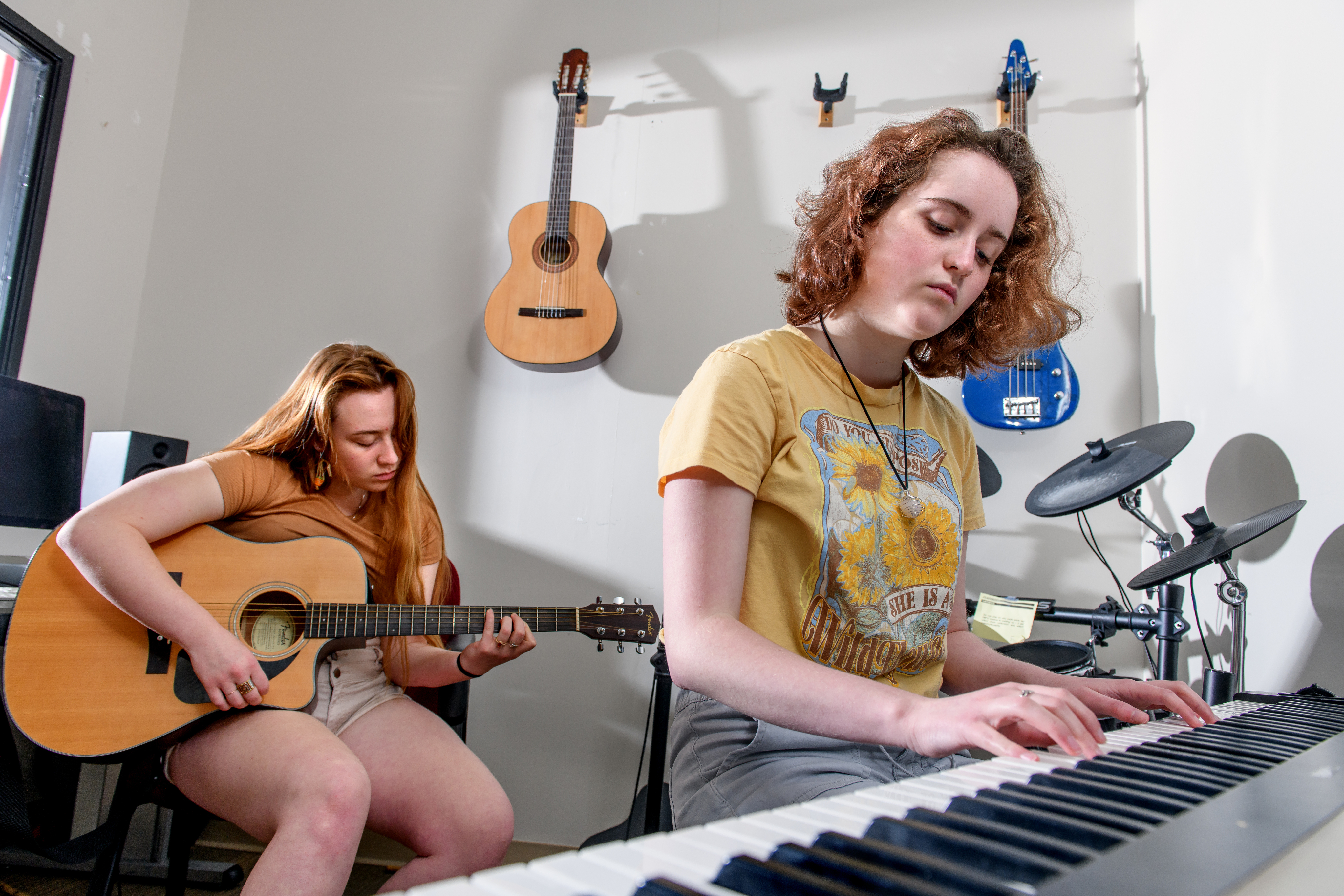 Click to see a larger version
Skip to end of gallery
Skip to start of gallery
Click to see a larger version
Skip to end of gallery
Skip to start of gallery
-
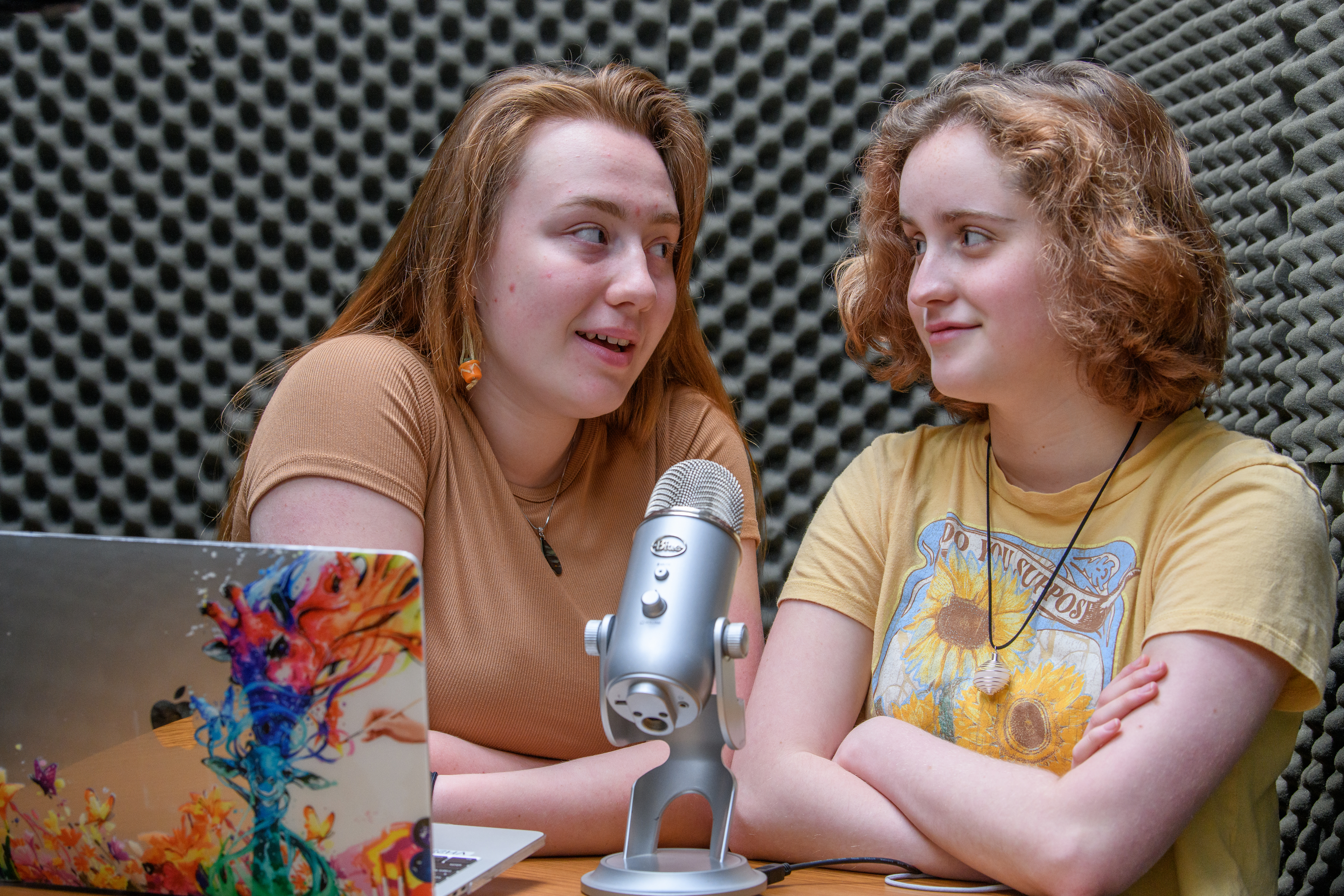 Click to see a larger version
Skip to end of gallery
Skip to start of gallery
Click to see a larger version
Skip to end of gallery
Skip to start of gallery
-
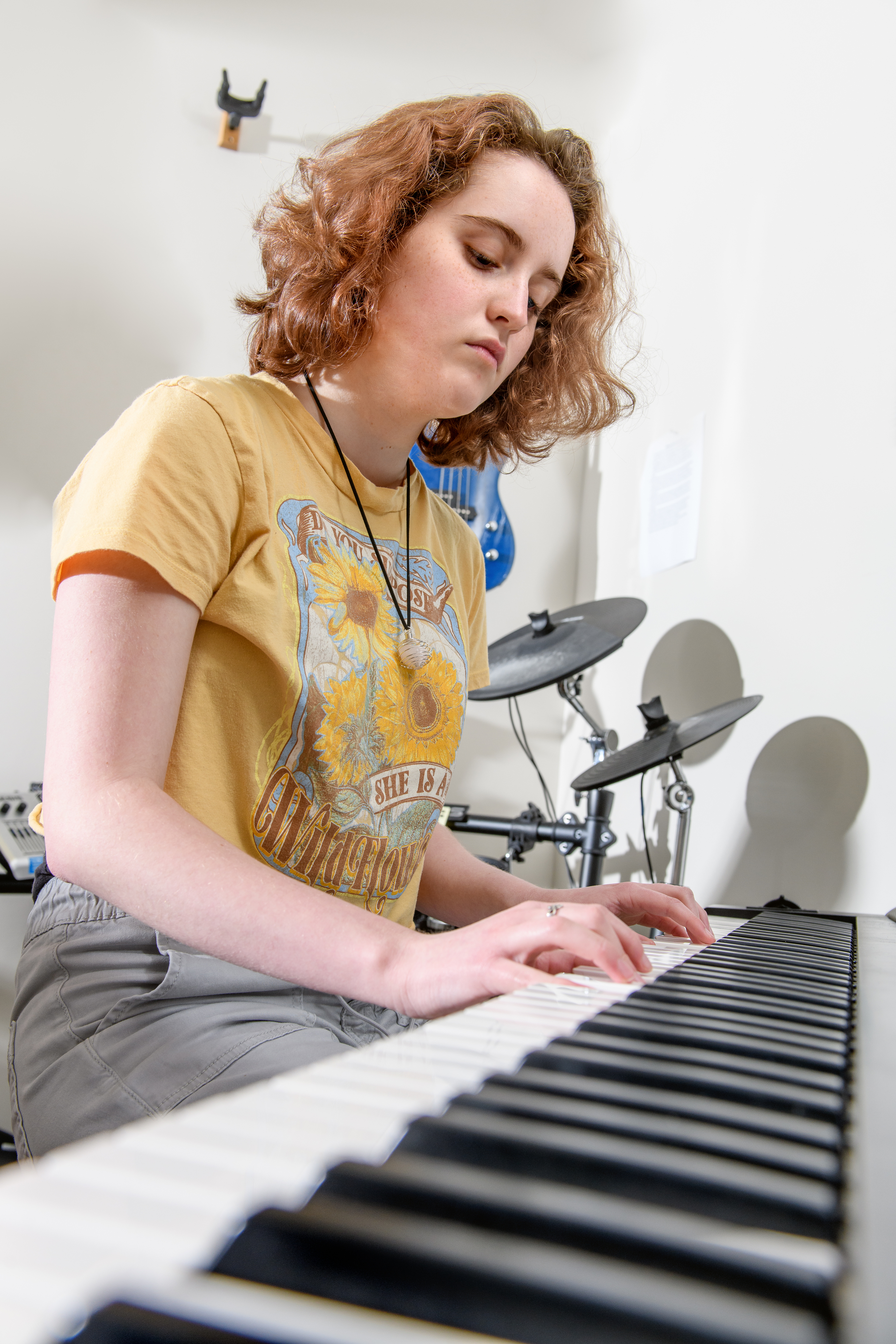 Click to see a larger version
Skip to end of gallery
Skip to start of gallery
Click to see a larger version
Skip to end of gallery
Skip to start of gallery
-
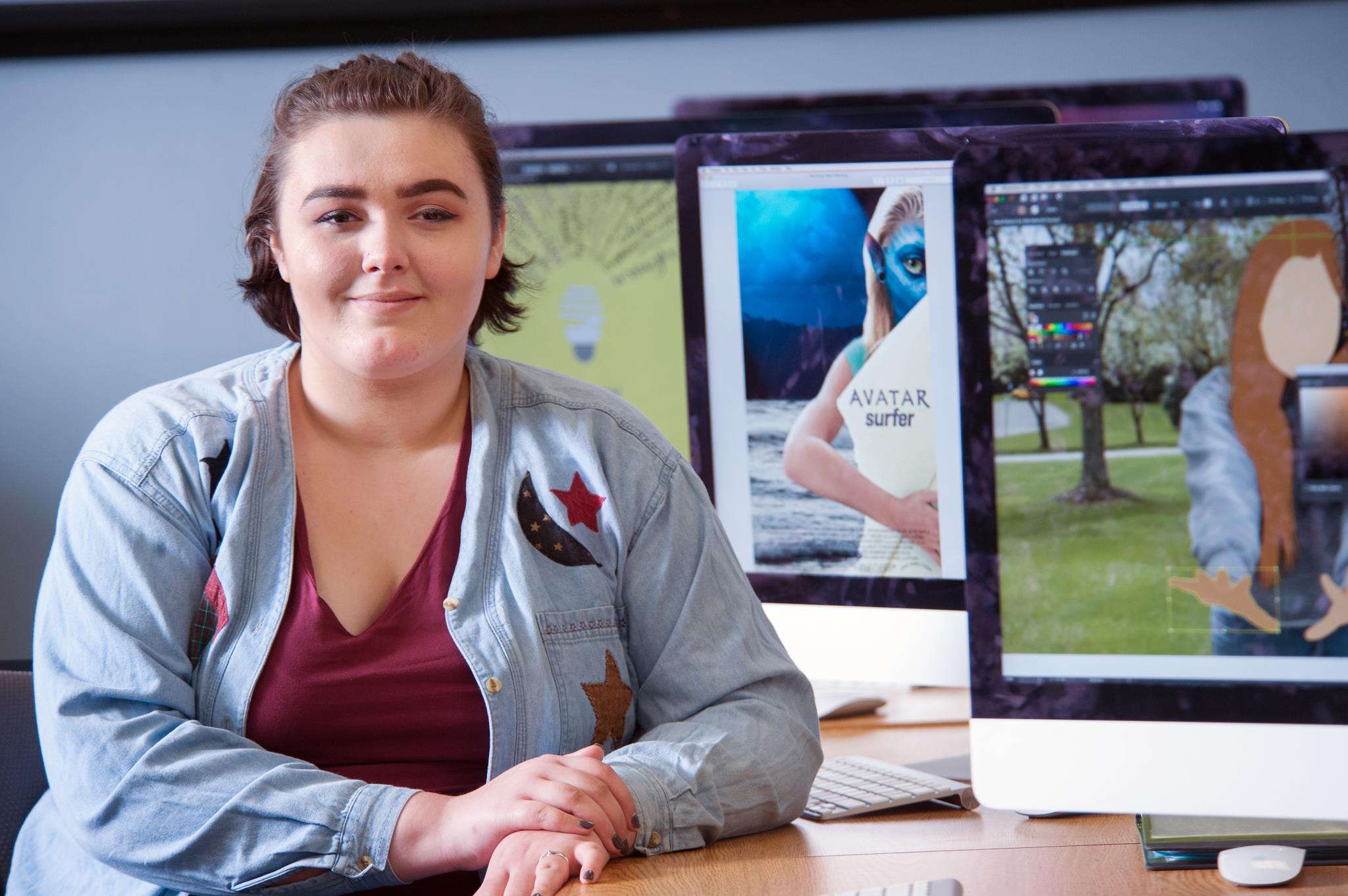 Click to see a larger version
Skip to end of gallery
Skip to start of gallery
Click to see a larger version
Skip to end of gallery
Skip to start of gallery
-
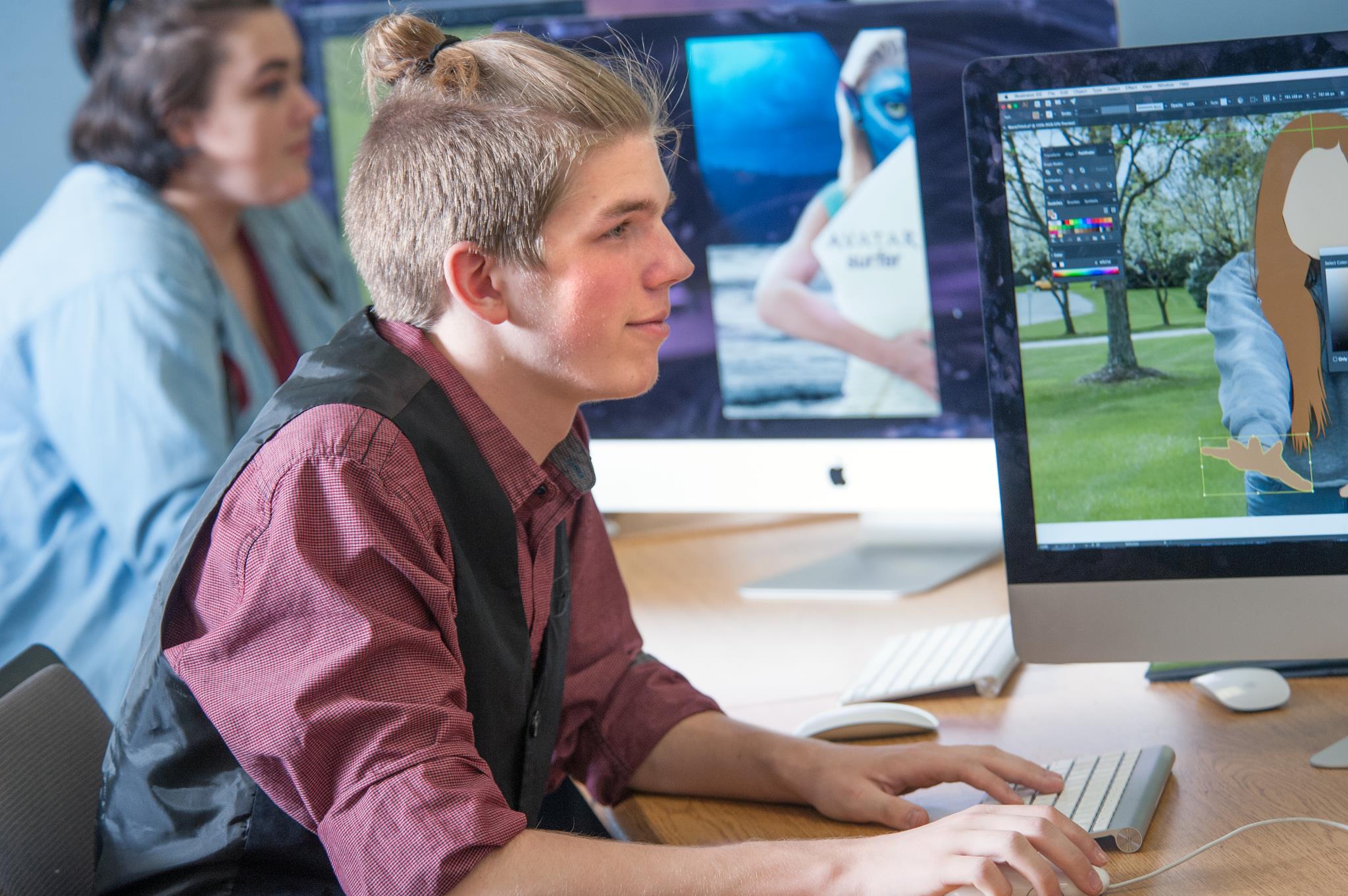 Click to see a larger version
Skip to end of gallery
Skip to start of gallery
Click to see a larger version
Skip to end of gallery
Skip to start of gallery
-
 Click to see a larger version
Skip to end of gallery
Skip to start of gallery
Click to see a larger version
Skip to end of gallery
Skip to start of gallery
-
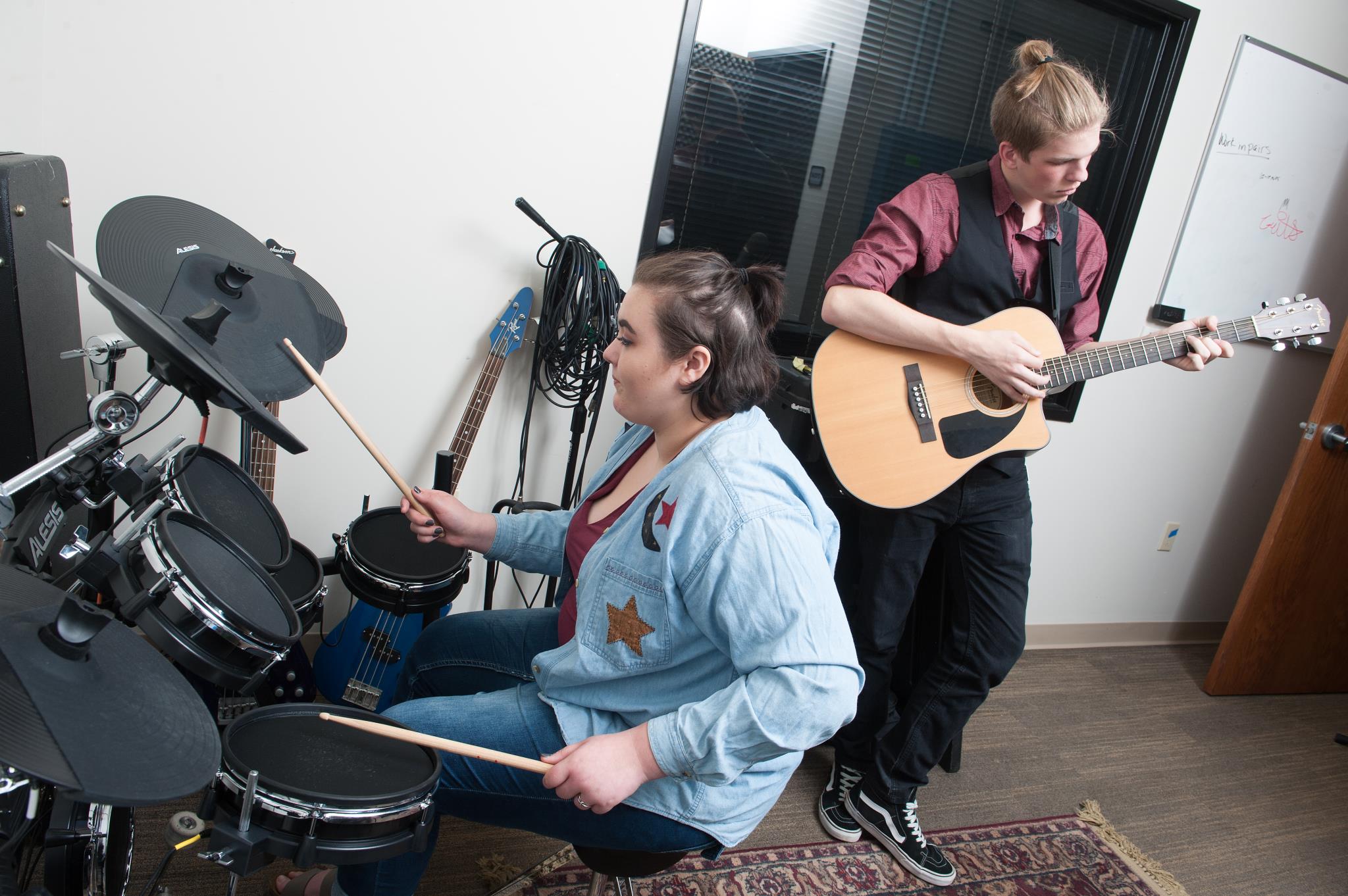 Click to see a larger version
Skip to end of gallery
Skip to start of gallery
Click to see a larger version
Skip to end of gallery
Skip to start of gallery
New Media Program Virtual Tour
Student Testimonial
![]() Download Transcript
Download Transcript
Music:
"Blue Ska" Kevin MacLeod (incompetech.com)
Licensed under Creative Commons: By Attribution 4.0 License
creativecommons.org/licenses/by/4.0/
About New Media
1 year program
Offered AM and PM
2nd year option available to qualifying students
Skills Students Leave With:
Computer Graphics
Illustration
Digital Communication
Digital Filming
Digital Photography
Conceptual Design Process
Sound Design
